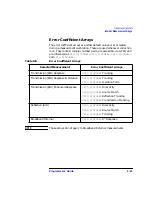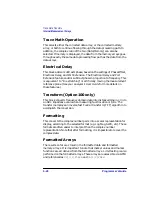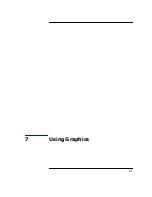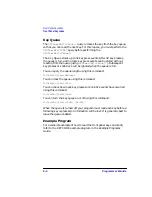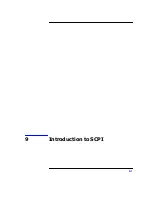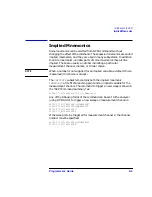
7-6
Programmer’s Guide
Using Graphics
The Graphics Buffer
The Graphics Buffer
The analyzer has a graphics buffer that is used to refresh the graphics
display if needed. When the buffer is full, additional graphics can still be
drawn — but they will not be refreshed. The graphics buffer can be
turned on and off using the following command (which is used in the
GRAPHICS
example program).
DISPlay:WINDow:GRAPhics:BUFFer[:STATe] <ON|OFF>
The graphics buffer will hold up to:
• 500 lines
• 40 circles
• 40 rectangles
• 50 strings (60 characters long)
Use the following command to clear the graphics buffer and
user-graphics display.
DISPlay:WINDow:GRAPhics:CLEar
NOTE
Only graphics that can be refreshed will be printed or plotted. If you
intend to print or plot your graphics, make sure they will fit within the
graphics buffer.
Summary of Contents for 8712ES
Page 11: ...1 1 1 Introduction to GPIB Programming ...
Page 27: ...2 1 2 Synchronizing the Analyzer and a Controller ...
Page 36: ...3 1 3 Passing Control ...
Page 39: ...4 1 4 Data Types and Encoding ...
Page 46: ...5 1 5 Using Status Registers ...
Page 71: ...6 1 6 Trace Data Transfers ...
Page 98: ...6 28 Programmer sGuide Trace Data Transfers Internal Measurement Arrays ...
Page 99: ...7 1 7 Using Graphics ...
Page 105: ...8 1 8 Front Panel Keycodes ...
Page 111: ...9 1 9 Introduction to SCPI ...
Page 129: ...10 1 10 Menu Map with SCPI Commands ...
Page 268: ...12 1 12 SCPI Conformance Information ...
Page 290: ...13 1 13 SCPI Error Messages ...




